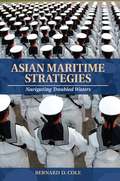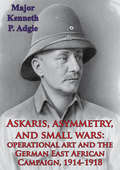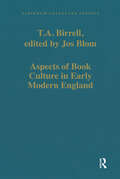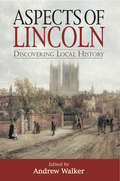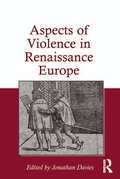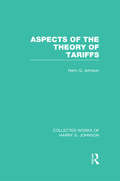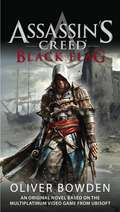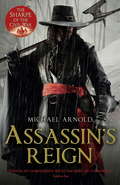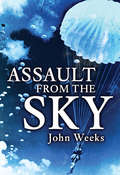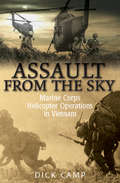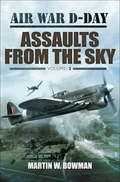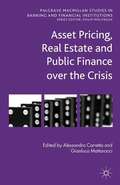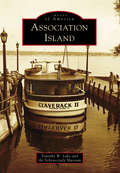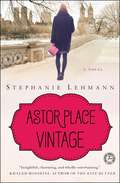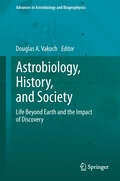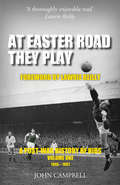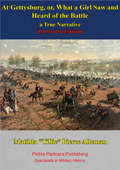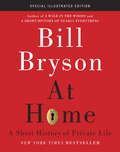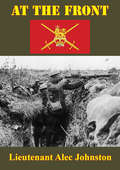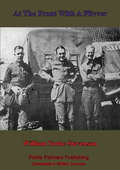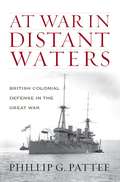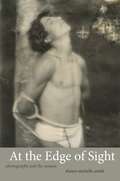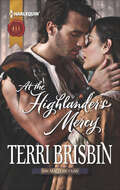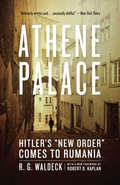- Table View
- List View
Asian Maritime Strategies
by Bernard D. ColeThis book is concerned with both the national security concerns of Asian maritime nations and the security of the Asian maritime commons. These are defined as the Pacific and Indian Oceans and associated seas, bays, and gulfs, with their included sea lines of communication (SLOCs). The most useful geographical designation for maritime Asia is the "Indo-Pacific." Bernard Cole provides both a survey of the maritime strategies of the primary nations of the Indo-Pacific region and an evaluation of the domestic and international politics that drive those strategies. The United States, Canada, Russia, Japan, North Korea, South Korea, China, the Philippines, Brunei, Indonesia, Vietnam, Singapore, Malaysia, Myanmar, India, Pakistan, Iran, the smaller Indian Ocean and Persian Gulf states are all surveyed and analyzed. The United States, Japan, China, and India not surprisingly draw the most attention, given their large modern navies and distant strategic reach. The author concludes that the United States remains the dominant maritime power in this huge region, stretching from Canada to the Persian Gulf, despite its lack of a traditionally strong merchant marine. U.S. maritime power remains paramount, due primarily to its dominant navy. The Chinese naval modernization program deservedly receives a good deal of public attention, but Cole argues that on a day-to-day basis the Japanese Maritime Self-Defense Force, as its navy is named, is the most powerful maritime force in Far Eastern waters, while the modernizing Indian Navy potentially dominates the Indian Ocean. In fact, a focus of this work is the exemplary description of all the region's navies, with the author noting the naval arms race that is underway, particularly in the area of submarine acquisition. Cole is careful to couch this phenomenon in the regional concerns about Chinese naval expansion and the desire to ensure a continued, massive U.S. naval presence. The current naval developments in the region evince elements of a naval arms race, but lack the coherent maritime strategies to make naval developments dangerous to regional peace and security. Most telling will be whether United States power and focus remain on the region, while adjusting to continued Chinese maritime power in a way acceptable to both nations. No other current or recent work provides such a complete description of the Indo-Pacific region's navies and maritime strategies, while analyzing the current and future impact of those forces.
Askaris, Asymmetry, And Small Wars: Operational Art And The German East African Campaign, 1914-1918
by Major Kenneth P. AdgieThis monograph analyzed whether Lieutenant Colonel Paul von Lettow-Vorbeck used operational art to defeat British forces in the East African campaign of World War I. British forces were superior in quantity of men and equipment, but slow moving and heavily dependent on secure lines of communication. Lettow-Vorbeck's forces maintained an asymmetric advantage in mobility, knowledge of terrain, and responsive logistics. An analogy was suggested that the U.S. Army in the twenty-first century is similar to British forces in 1914, and the nation's future adversaries could potentially use Lettow-Vorbeck's unconventional warfare and asymmetric tactics woven together in a comprehensive campaign plan.This monograph reviewed the origins and characteristics of operational art. The Army's emerging doctrine, Student Text 3-0, Operations defines operational art as the "use of military force to achieve strategic goals through the design, organization, integration, and conduct of theater strategic, campaigns, major operations, and battles" and serves as the entry point for discussion. A synthesis of Shimon Naveh and James Schneider's theories revealed five primary characteristics of operational art and was used as the criteria to evaluate the research question. The five characteristics were: operational objectives, operational maneuver, disruption, operational approach, and operational logistics. The East African campaign was analyzed from the perspective of Lettow-Vorbeck linking his strategic aim of forcing the British to commit forces to a secondary theater of operations to his limited resources. The four-year campaign was divided into three phases based on Lettow-Vorbeck's operational objectives and the correlation of forces. Significant tactical vignettes were examined as part of an overarching campaign plan. Finally, this monograph considered how the U.S. Army would fight an asymmetric enemy in a similar environment.
Aspects of Book Culture in Early Modern England (Variorum Collected Studies)
by T.A. Birrell edited by BlomThomas Anthony Birrell (1924-2011) was a man of many parts. For most of his working life he was Professor of English Literature in the University of Nijmegen, The Netherlands, where he was famous for his lively, humoristic and thought-provoking lectures. He was the author of some very popular literary surveys in Dutch, one of which - a history of English literature - has had seven editions so far. However, first and foremost he was a bibliographer and a book historian. The present collection contains fifteen of his book-historical articles, two reviews and one published version of a lecture for the illustrious ’Association Internationale de Bibliophilie’. The lecture - with a wealth of illustrations - about the British Library as the ’Custodian of the Unique’ gives one a sense of Birrell’s ability to present an audience with a complicated topic in comprehensible, but not simplified, terms. The reviews serve as a statement of principle of how to tackle the subject of ’English readers and books’ and the standards that ought to apply. The articles demonstrate Tom Birrell’s in-depth knowledge, dedication and scholarship. He once said that he felt that he could have talked to the 17th-century London booksellers on an equal footing and his work convinces one that they would have enjoyed these conversations. Aspects of Book Culture was edited by Birrell’s former pupil, colleague, friend and fellow-bibliographer Jos Blom.
Aspects of Lincoln: Discovering Local History
by Andrew WalkerAspects of Lincoln, is the first in the widely acclaimed Aspects series to feature the City of Lincoln. However the Aspects series now extends from the east and west Midlands, up to Lancaster in the north-west and the north Yorkshire coast in the east.Aspects of Lincoln, is a multi author book containing 12 pinpoint historical essays covering such diverse subjects as: Cinemas and Cinema Going in 20th Century Lincoln, Getting Drunk in 17th Century Lincoln, the story of Emily Gilbert, motoring pioneer and first woman sheriff of Lincoln. No story of Lincoln would be complete without Royal Air Force Bomber Command during World War 2, and here, we examine the social impact of the airfields and their staff on both City and County. In a more peaceful vein, we study the work of artist Peter de Wint and the importance of his works, now held in the Usher Gallery. Elsewhere we encounter the development of technical education in the City and remember the plight of those imprisoned in Lincoln's jails during the eighteenth and nineteenth centuries. These and much much more are to be found between the covers of Aspects of Lincoln. A treasury of history, both for the armchair historian and the student alike.
Aspects of Violence in Renaissance Europe
by Jonathan DaviesInterest in the history of violence has increased dramatically over the last ten years and recent studies have demonstrated the productive potential for further inquiry in this field. The early modern period is particularly ripe for further investigation because of the pervasiveness of violence. Certain countries may have witnessed a drop in the number of recorded homicides during this period, yet homicide is not the only marker of a violent society. This volume presents a range of contributions that look at various aspects of violence from the fourteenth to the seventeenth centuries, from student violence and misbehaviour in fifteenth-century Oxford and Paris to the depiction of war wounds in the English civil wars. The book is divided into three sections, each clustering chapters around the topics of interpersonal and ritual violence, war, and justice and the law. Informed by the disciplines of anthropology, criminology, the history of art, literary studies, and sociology, as well as history, the contributors examine all forms of violence including manslaughter, assault, rape, riots, war and justice. Previous studies have tended to emphasise long-term trends in violent behaviour but one must always be attentive to the specificity of violence and these essays reveal what it meant in particular places and at particular times.
Aspects of the Theory of Tariffs (Collected Works of Harry G. Johnson)
by Harry JohnsonAn internationally acknowledged authority on all aspects of the theory of international trade and payments, this book collects Harry Johnson’s contributions to the study of international trade, including a critique of the theory of effective protection. The book discusses: the integration of income distribution and other aspects of the economy into the positive theory of tariffs the issues raised by the use of tariffs to promote economic development the implications of distortions of various kinds in the working of competition for tariff theory and policy the costs of protection the implications of effective protection for world economic development and the economic effects of trade preferences the question of free trade and the extent to which it requires the harmonization other aspects of economic policy.
Assassin's Creed: Black Flag
by Oliver BowdenIt's the Golden Age of Piracy--a time when greed, ambition and corruption overcome all loyalties--and a brash young captain, Edward Kenway, is making his name known for being one of the greatest pirates of his time. In the brilliant new novel, Assassin's Creed: Black Flag, discover the story of how Edward, a young privateer, became one of the world's most deadly pirates and was drawn into the centuries-old battle between the Templars and the Assassins.
Assassin's Reign: Book 4 of The Civil War Chronicles (Stryker)
by Michael ArnoldAssassin's Reign, the fourth in The Civil War Chronicles, Michael Arnold's acclaimed series of historical thrillers, sees battle-scarred hero Captain Stryker, 'the Sharpe of the Civil War', in the fight of his life.'Stands in comparison with the best of Cornwell' Yorkshire PostThe forces of King Charles are victorious; their Parliamentarian enemies in deep crisis. In the west, the crucial port city of Bristol has fallen, and Royalist eyes fall quickly upon neighbouring Gloucester. Its walls are weak, its garrison under strength, and its governor - Sir Edward Massie - suspected of harbouring sympathy for the King.Stryker and his men are with the army as it converges on Gloucester, still reeling from the loss of a close friend at the bloody Battle of Stratton. Ordered to infiltrate the rebel city on a mission to discover whether Massie will indeed surrender, Stryker reluctantly embarks upon his most desperate mission yet. But Gloucester's defenders are more resolute than any had imagined, and catastrophe soon befalls him. With his life seemingly forfeit, Stryker is spared by an unlikely saviour; Vincent Skaithlocke, his former commander. The mercenary has returned to England to fight for Parliament, and offers Stryker his protection. As old friends adjust to life fighting for opposing sides, Stryker begins to question his own loyalties . . . but a chance discovery makes him realise that all in Gloucester is not what it seems, for a hidden menace threatens his own life, and that of King Charles himself.
Assassination!: The Brick Chronicle of Attempts on the Lives of Twelve US Presidents
by Brendan Powell SmithCreator of the bestselling The Brick Bible: A New Spin on the Old Testament and The Brick Bible: The New Testament, author Brendan Powell Smith offers a new take on American history. For more than a decade, Smith has honed his masterful work using LEGO(R) to re-create scenes from the Bible. Now, he turns his attention to unforgettable US presidential assassinations, both fatal and failed. Rediscover some of the most profound attacks that have occurred throughout US history involving the notorious assassinations on Abraham Lincoln, William McKinley, and John F. Kennedy. But did you also know that Richard Paul Pavlick sought to assassinate President Kennedy in 1960, though at the last minute he suddenly changed his mind? Or, that an unknown assailant desperately tried to murder Lincoln just eight months before his fatal night at Ford's Theatre? In addition, Smith reveals failed murder attempts against such presidents as Gerald Ford, Richard Nixon, Bill Clinton, and most recently, the 2011 attempt against President Barack Obama.With over four hundred highly detailed illustrations, Smith captivates the authenticity of these assassinations (re-creating famous photographs and oral history) while simultaneously demonstrating a creative new medium. Whether a historian or a LEGO(R) enthusiast, readers of all ages will surely be enthralled with Brendan Powell Smith's latest brick creation!
Assault From the Sky: The History of Airborne Warfare 1939-1980s
by John WeeksEx paratrooper John Weeks' exciting eBook is a dramatic history of airborne troops and their most famous actions: Crete, Arnhem, D-Day, the Vietnam War and beyond.Airborne raids caught popular imagination early in the Second World War, when the elite German forces carried out deadly operations deep behind enemy lines. Able to seize and hold objectives before the enemy has time to react, paratrooper assaults were seen as fast, dynamic and potentially devastating. However, they are also unpredictable. Requiring complete surprise, tactical flexibility and a lot of luck to succeed, a daring airborne raid can soon turn into a disaster, as the Allies discovered in Operation Market Garden. Studying the evolution of airborne forces over one of the bloodiest eras in world history, Assault from the Sky looks at the planners, the generals, aircraft, gliders, weapons and the men who created a revolution in modern warfare.
Assault from the Sky: Marine Corps Helicopter Operations in Vietnam
by Dick Camp&“Action-packed . . . he brings the reader artfully through the fog of war with clarity&” (20th Century Aviation Magazine). Vietnam has often been called our &“first helicopter war,&” and indeed, the US Marine Corps, as well as Army, had to feel its way forward during the initial combats. But by 1967, the combat was raging across South Vietnam, with confrontational battles against the NVA on a scale comparable to the great campaigns of WWII. In 1968, when the Communists launched their mammoth counteroffensive, the Marines were forced to fight on all sides, with the helicopter giving them the additional dimension that proved decisive in repelling the enemy. The author of this book, a Vietnam veteran and Purple Heart recipient who has also worked at the USMC History Division and National Museum of the Marine Corps in Quantico, uses his experiences as a company commander to bring the story to life by weaving personal accounts, after-action reports, and official documents into a compellingly readable narrative of service and sacrifice by Marine pilots and crewmen. The entire story of the war is depicted through the prism of Marine helicopter operations, from the first deployments to support the Army of the Republic of Vietnam against the Viet Cong through the rapid US buildup to stop the North Vietnamese Army, until the final withdrawal from our Embassy. &“Superlative research.&” —Leatherneck
Assaults from the Sky: Assaults From The Sky (Air War D-Day #2)
by Martin W. BowmanThis is the second volume of a comprehensive five part work on D-Day that includes a multitude of personal military accounts from both Allied and German Aviation personnel who were there. Overlord began with an assault by more than 23,000 airborne troops, 15,500 of them American, behind enemy lines to soften up the German troops and to secure key objectives. 6,600 paratroopers of the US 101st Screaming Eagles Division in 633 C-47s and 83 gliders and 6,396 paratroopers of the US 82nd All American Division in 1,101 C-47s and 427 gliders were dropped over the neck of the Cotentin peninsula. By the end of the operation, the list of casualties was extensive. But 101st Airborne Division linked up with the US 4th Infantry Division beach landings at Pouppeville, the most southerly exit off Utah Beach and the 82nd secured the area north of Ste-Mre-glise after fierce fighting and drove the enemy north, considerably delaying the German 243rd Infantry Division from contacting the Allied beach assault force. This important episode within the wider history of D-Day is enlivened in classic Bowman fashion, featuring both extensive historical notes as well as deeply personal accounts of endurance and individual gallantry.
Asset Pricing, Real Estate and Public Finance over the Crisis
by Alessandro Carretta Gianluca MattarocciThe current financial crisis started from the US real estate market and after, though the increase of risk premium requested by investors and due to the lack of liquidity of all financial markets, it became a world financial crisis. A detailed analysis during the crisis focuses attention on asset management, the real estate and public sector.
Association Island
by Schenectady Museum Timothy W. LakeMost people believe the General Electric retreat at Association Island was organized by GE. In reality, it was originally formed by several businessmen from the incandescent lamp industry; these men formed an association of lamp companies to compete with GE. A 1903 fishing trip to Henderson Harbor inspired them to purchase the island for their summer sojourns; however, ownership of the association and the island were eventually absorbed by GE, turning it into a full-scale resort for executives and managers of the ever-expanding corporation. Hotels, restaurants, garages, boats, fishing guides, managers, and maintenance workers from nearby Henderson Harbor were all tied to Association Island for the next 50 years. When GE gave it away, Association Island fell into a long and steady period of decline until it was turned into a camping resort for the 21st century. Association Island illustrates the financial and social impact of a significant corporation on a small fishing community.
Astor Place Vintage: A Novel
by Stephanie LehmannWhen a New York City vintage clothing shop owner’s recent purchases contain a hidden journal from 1907, her entire life will be turned upside down in this “insightful, charming, and wholly entertaining novel” (Khaled Hosseini, author of The Kite Runner).Amanda Rosenbloom, proprietor of Astor Place Vintage, thinks she’son just another call to appraise and possibly purchase clothing from a wealthy, elderly woman. But after discovering a journal sewn into a fur muff, Amanda gets much more than she anticipated. The pages of the journal reveal the life of Olive Westcott, a young woman who had moved to Manhattan in 1907. Olive was set on pursuing a career as a department store buyer in an era when Victorian ideas, limiting a woman’s sphere to marriage and motherhood, were only beginning to give way to modern ways of thinking. As Amanda reads the journal, her life begins to unravel until she can no longer ignore this voice from the past. Despite being separated by one hundred years, Amanda finds she’s connected to Olive in ways neither could ever have imagined.
Astrobiology, History, and Society: Life Beyond Earth and the Impact of Discovery (Advances in Astrobiology and Biogeophysics)
by Douglas A. VakochThis book addresses important current and historical topics in astrobiology and the search for life beyond Earth, including the search for extraterrestrial intelligence (SETI). The first section covers the plurality of worlds debate from antiquity through the nineteenth century, while section two covers the extraterrestrial life debate from the twentieth century to the present. The final section examines the societal impact of discovering life beyond Earth, including both cultural and religious dimensions. Throughout the book, authors draw links between their own chapters and those of other contributors, emphasizing the interconnections between the various strands of the history and societal impact of the search for extraterrestrial life. The chapters are all written by internationally recognized experts and are carefully edited by Douglas Vakoch, professor of clinical psychology at the California Institute of Integral Studies and Director of Interstellar Message Composition at the SETI Institute. This interdisciplinary book will benefit everybody trying to understand the meaning of astrobiology and SETI for our human society.
At Easter Road They Play, Volume 1: A Post-War History of Hibs, 1945–1967
by John CampbellFirst in a new trilogy about Scotland&’s storied Hibernian Football Club—from the on-the-pitch exploits of the Famous Five to the rise of Joe Baker. Since 1875 Hibernian Football Club has been an integral part of sporting life in the City of Edinburgh and Port of Leith; its early history up to 1946 has been brilliantly documented in The Making of Hibernian trilogy by Alan Lugton. John Campbell&’s At Easter Road They Play is the first part of a new trilogy that brings the history up to date, picking up the story from 1946 and covering what was the most successful part of the club&’s history when Hibernian won three Championship titles and became the first British club to play in the European Cup, reaching the semifinal. Packed with anecdotal tales of the times, it gives a fascinating insight into life at the club when the Famous Five were in their heyday right through to the mid-sixties when a young lad by the name of Joe Baker burst onto the scene. A game-by-game, goal-by-goal account of the many highs and numerous lows, At Easter Road They Play takes the reader on a fantastic journey back to the days when massive crowds flocked to Easter Road to see Hibernian play. For any Hibs fan that lived through those heady days this book will bring back to life a host of happy memories whilst at the same time allowing those fans who were perhaps too young or not even born at the time to see just how different football was back then when compared to the modern-day game.&“A thoroughly enjoyable read.&” —Lawrie Reilly
At Gettysburg, Or, What A Girl Saw And Heard Of The Battle. A True Narrative. [Illustrated Edition]
by Matilda "Tillie" Pierce AllemanIncludes Gettysburg Map and Illustrations Pack - 30 additional maps, plans and illustrations"The experience of a little girl, during three days of a hard fought battle, as portrayed in this volume is certainly of rare occurrence, and very likely has never been realized before.Such a narrative as the following, is worthy of preservation among the pages of our nations literature.The story is told with such marked faithfulness, such honesty of expression, such vividness of portrayal, that those who lived in, and passed through those scenes, or similar ones, will at once recognize the situations, and surroundings, as natural and real.While perusing its pages, the veteran will again live in the days gone by; when he tramped the dusty march, joined in the terrible charge, or suffered in the army hospital.The Heroine of this book, performed her part well; but it is doubtful whether, at the time, she fully realized the heart-felt thanks, and noble thoughts that sprang from the "Boys in Blue," in response to her heroism and kindness.How vividly is presented the weary march to the field of conflict; our eagerness to quaff the sparkling water, as she handed it to us, fresh from the cooling spring.We thanked her, but she did not hear the full gratitude that was in our hearts."-Preface.
At Home: Special Illustrated Edition
by Bill BrysonFrom one of the most beloved authors of our time--more than six million copies of his books have been sold in this country alone--a fascinating excursion into the history behind the place we call home. "Houses aren't refuges from history. They are where history ends up." Bill Bryson and his family live in a Victorian parsonage in a part of England where nothing of any great significance has happened since the Romans decamped. Yet one day, he began to consider how very little he knew about the ordinary things of life as he found it in that comfortable home. To remedy this, he formed the idea of journeying about his house from room to room to "write a history of the world without leaving home." The bathroom provides the occasion for a history of hygiene; the bedroom, sex, death, and sleep; the kitchen, nutrition and the spice trade; and so on, as Bryson shows how each has figured in the evolution of private life. Whatever happens in the world, he demonstrates, ends up in our house, in the paint and the pipes and the pillows and every item of furniture. Bill Bryson has one of the liveliest, most inquisitive minds on the planet, and he is a master at turning the seemingly isolated or mundane fact into an occasion for the most diverting exposition imaginable. His wit and sheer prose fluency make At Home one of the most entertaining books ever written about private life.
At The Front
by Lieutenant Alec JohnstonTHE purpose of this little volume is to preserve, for his friends and the many others who cared for his writings, a record of the work which Alec Johnston contributed to Punch during the War. Written under all sorts of impossible conditions, they never pretended to be more than the gay and cynical banter of one who brought to the hardships and perils of life at the Front an incurable habit of humour. For several years Alec Johnston had been associated with Punch as an occasional contributor of light verse and prose. After leaving Oxford where, as at St. Paul's School, he had given promise of a brilliant career, he became a schoolmaster, but his inclinations lay elsewhere and he would probably have followed the profession of letters but for the outbreak of war. Within two days he enlisted in the Artists' Rifles-he was then twenty-five years old-and went out with their first draft in October, 1914. In February of the next year he received a commission in the 1st King's Shropshire Light Infantry, and was with them first at Armentières, and then upon the Ypres salient till his death. He was promoted Lieutenant in September, 1915.
At The Front In A Flivver [Illustrated Edition]
by William Yorke StevensonMany American citizens flocked to join the Allied war effort against Germany during the First World War before their mother country eventually declared war in 1917. William Yorke Stevenson was one of their number, volunteering for service with the French Ambulance corps or Section Sanitaire. Never war from the frontlines in rather ramshackle old vehicles [the flivver of the title is a slang term for a run-down truck], these men risked their lives to evacuate and treat the wounded.The Author recounts his experiences of 1915-1917 based on his dairy of the period. It provides a day-by-day account of the medical services behind the lines during some of the heaviest French fighting of the war during the battle of the Somme. Illustrated throughout with the Author's own photos of the period, including his comrades, conditions and the battle damage of the towns and villages amongst which he worked and lived.Author -- William Yorke Stevenson (1878 - 1922)Text taken, whole and complete, from the edition published in Boston and New York, Houghton Miflin, 1917.Original Page Count - 334 pages.Illustrations -- 12 illustrations.
At War in Distant Waters
by Phillip G. PatteeA Great and Urgent Imperial Service investigates the reasons behind Great Britain's combined military and naval offensive expeditions of Europe during the Great War. These campaigns have been branded by various historians as unnecessary sideshows to the conflict waged on the European continent. Pattee argues that the various campaigns were necessary adjuncts to the war in Europe, and fulfilled an important strategic purpose by protecting British trade where it was most vulnerable. Since international trade was essential for maintaining the island nation's way of life, Great Britain required freedom of the seas in order to maintain its global trade. While the German High Seas Fleet constituted a serious threat that placed the British coast at grave risk, forcing the Royal Navy to concentrate in home waters, the importance of the island empire's global trade made it a valuable and vulnerable target to Germany's various commerce raiders-as Admiral Tirpitz's risk theory had anticipated.
At the Edge of Sight: Photography and the Unseen
by Shawn Michelle SmithThe advent of photography revolutionized perception, making visible what was once impossible to see with the human eye. In At the Edge of Sight, Shawn Michelle Smith engages these dynamics of seeing and not seeing, focusing attention as much on absence as presence, on the invisible as the visible. Exploring the limits of photography and vision, she asks: What fails to register photographically, and what remains beyond the frame? What is hidden by design, and what is obscured by cultural blindness? Smith studies manifestations of photography's brush with the unseen in her own photographic work and across the wide-ranging images of early American photographers, including F. Holland Day, Eadweard Muybridge, Andrew J. Russell, Chansonetta Stanley Emmons, and Augustus Washington. She concludes by showing how concerns raised in the nineteenth century remain pertinent today in the photographs of Abu Ghraib. Ultimately, Smith explores the capacity of photography to reveal what remains beyond the edge of sight.
At the Highlander's Mercy: The Highlander's Stolen Touch At The Highlander's Mercy The Highlander's Dangerous Temptation Yield To The Highlander (The MacLerie Clan)
by Terri BrisbinA clan chief’s desperate plan to reunite his people may also rekindle an unforgettable passion in this medieval Scottish romance.To regain control of his fractured clan, Robert Matheson needs bargaining power. Taking Lilidh MacLerie hostage should give him plenty. But Lilidh is no ordinary captive. She’s the woman he once loved—and rejected!Rob’s touch is etched permanently into Lilidh’s memory. Unaware that he was forced to repudiate their love, she has never forgotten the man who broke her heart all those years ago. Now, looking into the eyes of her captor, she no longer recognizes this fearsome leader. She should be afraid—there’s no telling what he will do. But something about him excites and unnerves her in equal measure . . . .
Athene Palace: Hitler's "New Order" Comes to Rumania
by R.G. WaldeckOn the day that Paris fell to the Nazis, R. G. Waldeck was checking into the swankiest hotel in Bucharest, the Athene Palace. A cosmopolitan center during the war, the hotel was populated by Italian and German oilmen hoping to secure new business opportunities in Romania, international spies cloaked in fake identities, and Nazi officers whom Waldeck discovered to be intelligent but utterly bloodless. A German Jew and a reporter for Newsweek, Waldeck became a close observer of the Nazi invasion. As King Carol first tried to placate the Nazis, then abdicated the throne in favor of his son, Waldeck was dressing for dinners with diplomats and cozying up to Nazi officers to get insight and information. From her unique vantage, she watched as Romania, a country with a pro-totalitarian elite and a deep strain of anti-Semitism, suffered civil unrest, a German invasion, and an earthquake, before turning against the Nazis. A striking combination of social intimacy and disinterest political analysis, Athene Palace evokes the elegance and excitement of the dynamic international community in Bucharest before the world had comes to grips with the horrors of war and genocide. Waldeck’s account strikingly presents the finely wrought surface of dinner parties, polite discourse, and charisma, while recognizing the undercurrents of violence and greed that ran through the denizens of Athene Palace.
